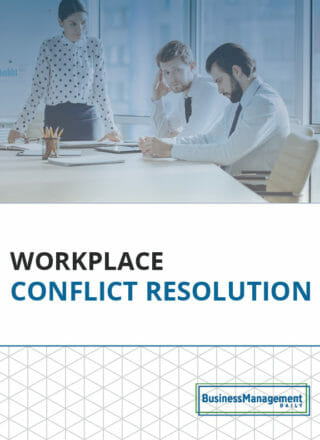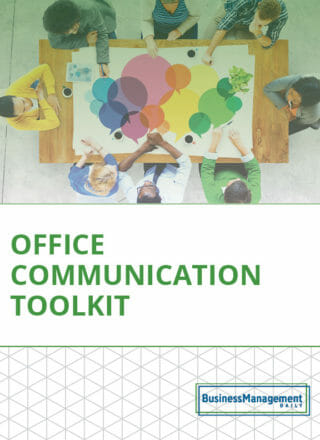Workplace Conflict
From petty fights and unintentional misunderstandings to vigorous debates and emotional disagreements, tensions in one form or another arise among people who work together. Conflict management styles vary, but whatever approach you choose in dealing with employee conflict, our advice will help you in conflict resolution in the workplace.
Here are some frequently asked questions about workplace conflict:
What causes workplace conflict?
Individual employees sometimes butt heads with one another for reasons that may or may not have to do with work. Tensions can be rooted in anything from power struggles and clashing work styles to perceived slights and unfounded rumors. Disagreements between workers and higher-ups are another common source of workplace conflict. The sides may hold different perspectives on issues such as interpretation of policies or how a job should be performed.
What does workplace conflict look like?
People possess different “fighting” styles. Some may be very verbal or confrontational with the source of their displeasure. Others suffer in silence or turn to sneakier measures such as gossip. Many workers handle conflict maturely with an eagerness to calmly resolve matters. Others hold long-lasting grudges that lead those around them to walk on eggshells. In extreme cases, workplace conflict takes the form of bullying or harassment – coercive, aggressive behavior designed to intimidate someone else.
What is the potential toll of workplace conflict?
Productivity often suffers when someone experiences workplace conflict. The affected individual may spend too much time thinking about the matter, call in sick regularly to avoid the problem, or decide to seek employment elsewhere. Consequences may extend well beyond parties directly involved and create a toxic culture marked by low morale, pressure to “choose sides,” and failure to perform as a cohesive unit. In cases of potential bullying or harassment, lawsuits may be filed.
How can workplace conflict be prevented?
Inevitably, people do not always see eye to eye. However, disagreements don’t need to escalate into unhealthy territory. Prompt attention can nip tensions in the bud and keep them from festering into messy situations. Leaders must not let hurtful or unprofessional behavior slide. And helping employees improve their interpersonal skills through company-sponsored training gives workers the tools to respectfully handle disagreements with colleagues.
Creating a workplace culture of trust also goes a long way toward preventing workplace conflict. By providing employees ample opportunity to offer feedback and express opinions without fear of repercussion, companies receive valuable insight about discontent and can act on this information. Similarly, honesty and transparency from leaders discourages an “us vs. them” mentality by helping workers feel like a valued part of the company and its goals.
What are the best ways to deal with workplace conflict?
Effective communication often eases tensions. Leaders should encourage affected parties to talk things out, either alone or with assistance from a manager or HR rep. Such conversations give each side a chance to be heard, clear up misconceptions, and create plans for moving forward in peace. Focusing on common goals and the good of the company can help workers put aside individual differences. Tensions between management and employees can be approached in much the same way, offering opportunities to raise concerns and express viewpoints within the confines of a “safe” discussion.
For cases involving bullying or harassment, leaders need to have a more direct exchange that points out violations of company policies and repercussions if such behavior continues. Documentation of the questionable actions and the company’s response is a must. Business Management Daily offers a variety of articles with targeted advice on handling potentially volatile workplace conflicts.
Can workplace conflict ever be positive?
Yes. Hidden problems are unsolved problems, so company progress and innovation often starts with passionate individuals willing to bring opinions and ideas to the table despite the potential to ruffle feathers.






















